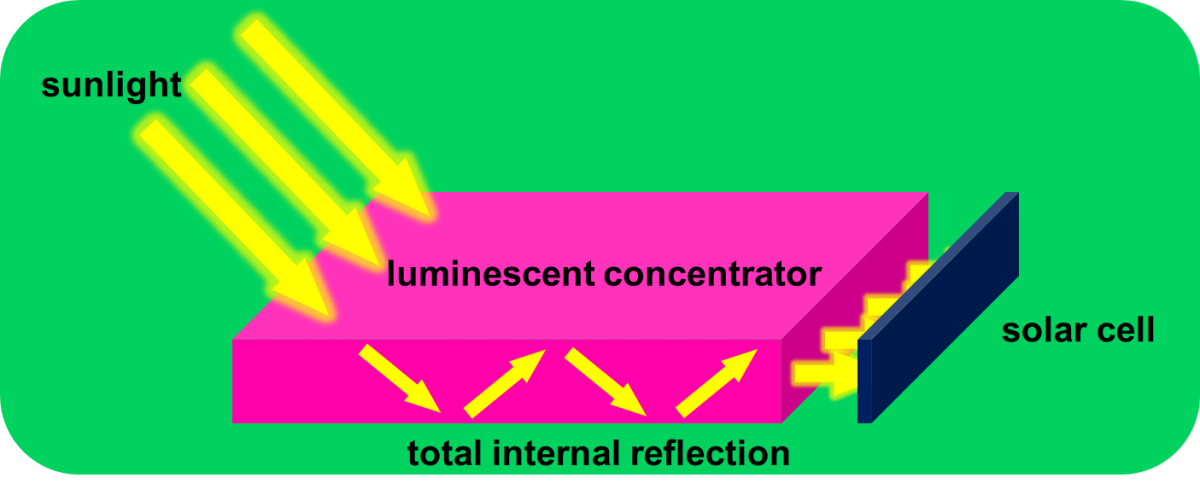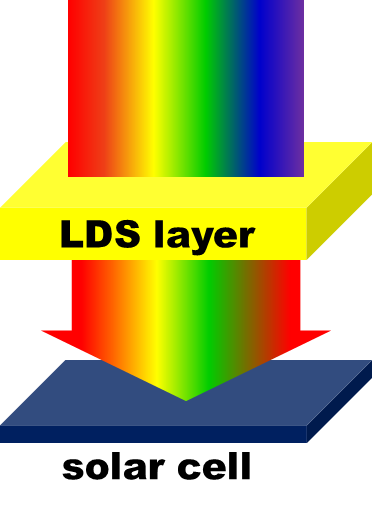What are they?
Another way of using solar panels more efficiently is to use concentrators. Building panels that have large surface areas able to capture lots of sunlight uses a lot of material and takes up a lot of space. Instead, if we can focus sunlight from a wide area on to small and highly efficient cells, we can get more power for our money. Many of the highly efficient solar cells even work better under these intense sunlight conditions than they do in non-concentrated sunlight.
Reflecting concentrators
One method of concentrating the sunlight is to use lenses and mirrors to redirect the light that falls onto them to a focus point, which is where you would position the solar cell. Many of these devices can even track the sun as it follows the path across the sky over the course of the day! This means that the solar cells are always being supplied with the most intense sunlight available.
Luminescent solar concentrators (LSC)
These are light-concentrating devices consisting of a flat perspex sheet with luminescent dyes inside which catches light over a large area and concentrates it to the edge of the sheet, reducing the area and therefore the cost of the solar cell unit required. The dyes in the sheet absorb the incoming light and then re-emit it. The emitted light is trapped in the sheet by something called “total internal reflection” – the same way as light is trapped in fibre-optics – and it is guided to the solar cells at the edge of the sheet, which convert this light energy into electricity.

Perspex sheets filled with luminescent dyes can be used to concentrate the sunlight collected over a large area to the edge of the sheet, thus reducing the amount of expensive solar cell material needed. Notice that the edges of the perspex sheet seem to be glowing? The light that hits the faces of the transparent piece of plastic is concentrated towards the edges.
Luminescent Down Shifting Layers (LDS)
Many commercial solar panels modules exhibit poor response to short wavelengths, i.e. they absorb green and red light well but are not so good at absorbing blue. This lowers the efficiency and performance of the solar cell. To overcome this problem luminescent dyes can be used in Down Shifting layers which are placed above the PV module.

These layers contain luminescent dyes that absorb the blue light and then re-emit it at longer wavelengths such as green and red. This is called down-shifting. The solar cell beneath can now absorb this light too and produce more power. These LDS layers could be used in ‘electric’ windows that bounce sunlight towards solar cells built into window frames, all part of the vision of building-integrated photovoltaics.
The Scottish Institute for Solar Energy Research (SISER) held a workshop in February 2013 which allowed artists, scientists and architects to come together and explore how luminescent concentrator materials can be used to create innovative buildings which are both attractive and energy smart. Here are some of the great ideas the participants came up with!
Photos by Yaz Norris


